Publication 102 - Wisconsin Tax Treatment Of Tax-Option (S) Corporations And Their Shareholders Page 11
ADVERTISEMENT
Wisconsin Tax Treatment of Tax-Option (S) Corporations and Their Shareholders
amortization existed before January 1, 1987. These
and P.L. 105-34, generally won’t apply for Wisconsin
purposes unless retroactively adopted by the Wisconsin
differences are summarized in the instructions for
Legislature.
preparing the tax-option (S) corporation franchise or
income tax return, Form 5S.
d. Adjustments required as a result of making different
elections for federal and Wisconsin purposes.
b. Differences between the federal and Wisconsin
bases of assets disposed of during the taxable year.
Example 1: The federal work opportunity tax credit and
federal research credit are allowed instead of deductions
Example: During the current taxable year, a corporation
for wages and research expenses, respectively. For
sold the following assets, which had been held more than
Wisconsin purposes, the corporation may elect not to
one year:
reduce wages and research expenses by the amount of
these credits.
Selling
Wisconsin
Federal
Price
Basis
Basis
Example 2: For federal purposes, shareholders may claim
Building
$ 200,000
$ 150,000
$ 120,000
either a credit or a deduction for foreign income taxes paid
Machinery
15,000
5,000
17,500
by a tax-option (S) corporation. For Wisconsin purposes,
Equipment
1,000
1,500
500
the foreign taxes may be deductible as provided under the
Internal Revenue Code.
The gains (losses) realized on these transactions are:
e. An addition (on Schedule 5K, line 1) for manufac-
Wisconsin
Federal
turer’s sales tax credit claimed on Form 5S, line 5,
Gain (Loss)
Gain (Loss)
but not more than the tax on Form 5S, line 4.
Building
$ 50,000
$ 80,000
Machinery
10,000
(2,500 )
f.
An addition (on Schedule 5K, line 1) for develop-
Equipment
(500 )
500
ment zones credits computed on Wisconsin Sched-
Total
$ 59,500
$ 78,000
ule DC, lines 11, 19, 27, 59, 65, 71, and 77, to the
extent that the amounts aren’t included in federal
For federal purposes, the $500 gain on the sale of the
taxable income.
equipment is determined to be depreciation recapture,
which is treated as ordinary gain and included in the
g. An addition (generally on Schedule 5K, line 1) for
corporation’s ordinary income or loss on Form 5S,
taxes imposed by Wisconsin, any other state, and the
Schedule 5K, line l, column b.
District of Columbia that are value-added taxes,
single business taxes, or taxes on or measured by all
The corporation must recompute a federal Form 4797,
or a portion of net income, gross income, gross
substituting the Wisconsin depreciation allowed or allow-
receipts, or capital stock and that were deducted in
able and the Wisconsin basis of the assets for the federal
amounts.
computing federal income.
For Wisconsin purposes, $5,000 of the gain on the sale of
Note: You must also show nondeductible taxes as an
the machinery is determined to be depreciation recapture,
addition on Schedule 5K, line 18.
which is treated as ordinary gain.
Example 1: The Internal Revenue Service has determined
The corporation enters $4,500 ($5,000 Wisconsin ordi-
that for federal purposes Wisconsin’s temporary recycling
nary gain minus $500 federal ordinary gain) on Schedule
surcharge is a state tax within the meaning of IRC section
5K, line 1, column c. The corporation makes the following
164(a). Therefore, it may be deductible as provided under
entries on Schedule 5K, line 5: $77,500 in column b,
section 164. The amount deductible for federal purposes
$(23,000) in column c, and $54,500 in column d.
must be added back to federal income to arrive at Wiscon-
sin income.
c. Adjustments required because the federal amount
was computed using a provision of the Internal
Example 2: A tax-option (S) corporation does business in
Revenue Code that doesn’t apply for Wisconsin
Wisconsin and in another state that doesn’t recognize its
purposes.
S status. The corporation pays $5,000 of franchise tax to
the other state, which it deducts in computing federal
ordinary income as shown on Schedule 5K, line 1, column
Example: Federal law changes enacted after Decem-
b. The $5,000 must be shown as an addition to income on
ber 31, 1996, other than the changes made by P.L. 105-33
Schedule 5K, line 1, column c, and as an increase in the
9
ADVERTISEMENT
0 votes
Related Articles
Related forms
Related Categories
Parent category: Financial
 1
1 2
2 3
3 4
4 5
5 6
6 7
7 8
8 9
9 10
10 11
11 12
12 13
13 14
14 15
15 16
16 17
17 18
18 19
19 20
20 21
21 22
22 23
23 24
24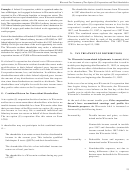 25
25 26
26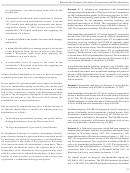 27
27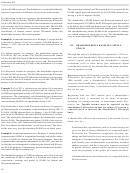 28
28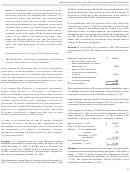 29
29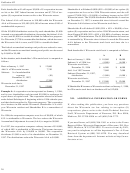 30
30








